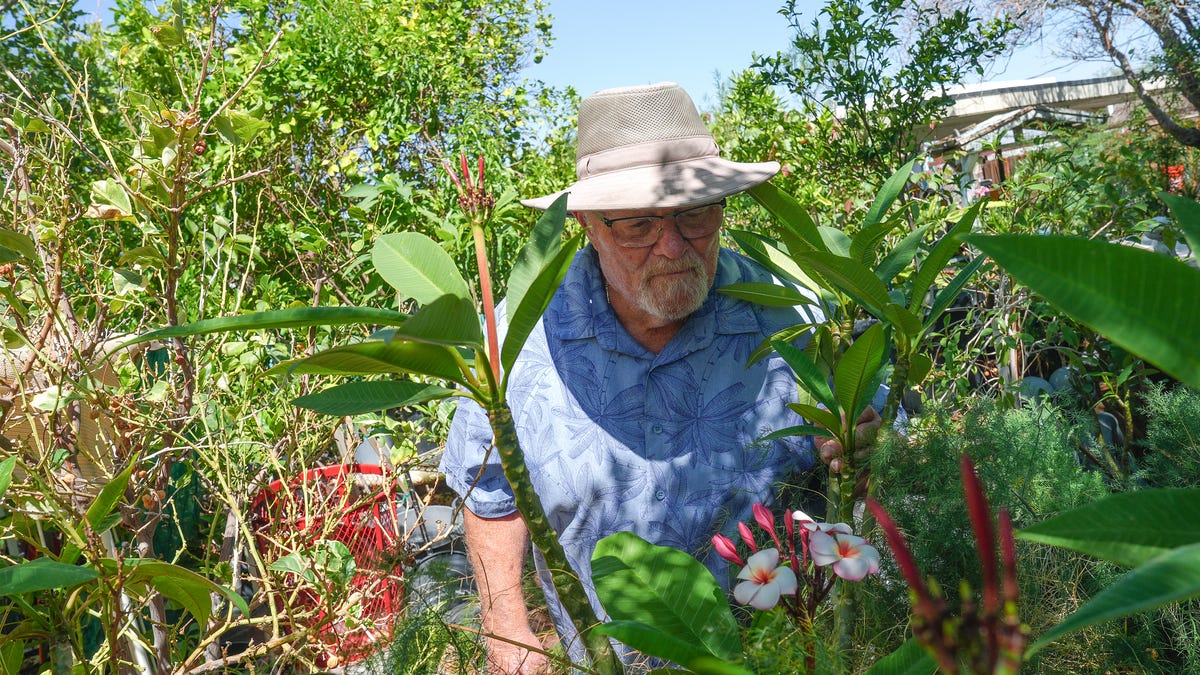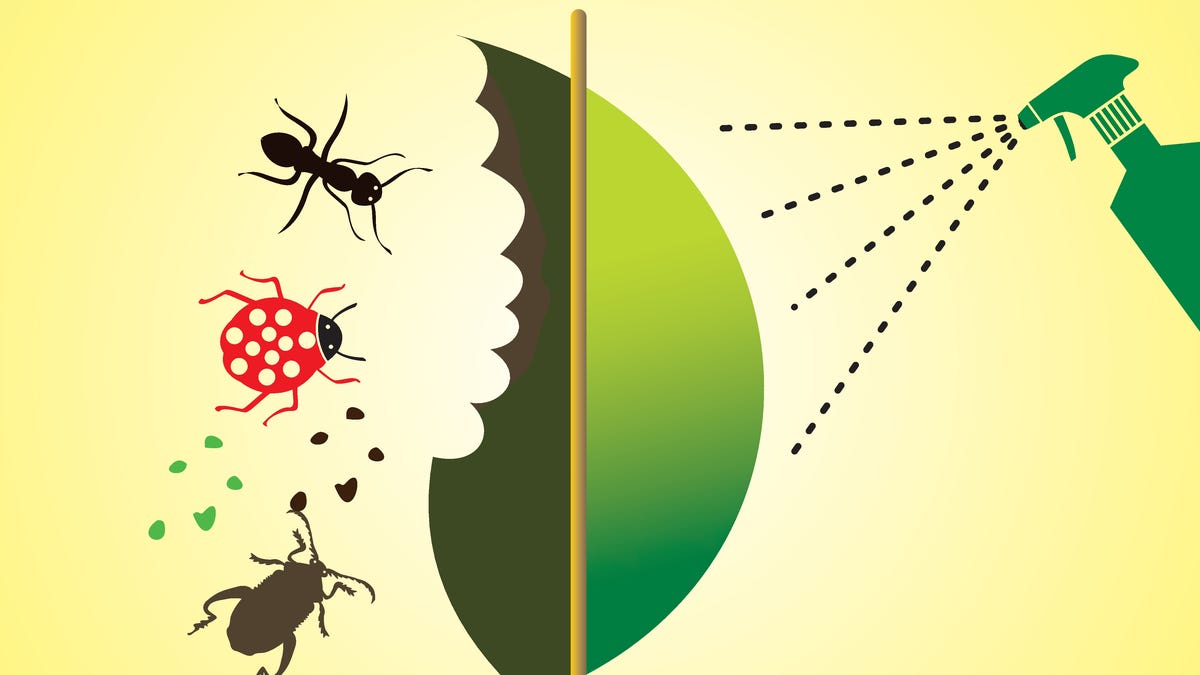Let’s have a look this week at some newsy tidbits going on in the gardening world before things get warm enough to get busy outside…
The sun as a weed-fighter
Organic gardeners sometimes “solarize” their garden beds when soilborne diseases are getting out of hand.
The process involves stretching a sheet of clear plastic over the infected soil and letting the sun bake the pathogens to death over four to six weeks in early summer.
Researchers at Penn State University believe solarization also has merit in killing weeds and weed seeds – not only in gardens but possibly enough to replace chemical fumigation on farms.
The U.S. Department of Agriculture has awarded the researchers a $1 million grant to study the possibility over the next four years at plots in Florida and Pennsylvania.
Penn State’s theory is that solarization is particularly weed-effective when 1.) compost or similar organic matter is worked into the soil beforehand, and 2.) the soil is wet with water to about a foot deep before covering with plastic.
Besides the disease-killing heat effects, Penn State researchers believe the anaerobic (low-oxygen) conditions under the wet, covered soil produce volatile fatty acids that are toxic to weeds.
An earlier Penn State study found that adding organic matter raises temperatures underneath the plastic up to 7 degrees more than covering unamended soil. About 85 percent of the organic matter decomposed within 22 days.
Studies in Oklahoma have found that solarizing can increase the temperature to 126 degrees in the top inch of the soil and to 98 degrees at one foot down – enough to “pasteurize” pathogens such as the ones that cause Fusarium wilt, phytophthora blight, and potato scab.
What Penn State’s new research hopes to nail down are factors such as what kind and how much organic matter is ideal for killing weeds, how thick the plastic cover should be, what effects the process has on soil nutrition and pH (soil acidity), and what’s the ideal scenario for killing weeds, pathogens, and pest bugs while preserving as many beneficial soil microbes as possible.
The results could be a no-spray aid to home gardeners who frequently battle bugs, diseases, and weeds that lodge in their vegetable-garden soil.
This sweetbox plant, normally an evergreen, has been badly browned by cold temperatures in January.George Weigel
Our cold 2025 start
This winter harkens back to the “old cold” winters of yesteryear.
While most of our landscape plants are equipped to handle the temperatures we’ve been seeing, some less-hardier fare might have encountered trouble during the three straight nights in January when temperatures dipped below zero.
We could see more diebacks and deaths than usual this year in borderline-hardy plants (crape myrtles, figs, osmanthus, etc.) as well as widespread winterburn damage to the foliage of broadleaf evergreens such as aucuba, sweetbox, euonymus, hollies, leucothoe, and boxwoods.
It’s still too early to assess the final toll for two reasons.
One is that plants have yet to go through the handoff from winter into early spring – another crucial period in which plants become more prone to damage if they start to break dormancy and then get blasted by a sudden, later cold spell.
The second is how much our January snow cover mitigated the effects of the Arctic-blast temperatures and wind.
Snow has an insulating effect on the soil and roots in it, lessening the worse damage that might have occurred if the ground had been bare.
We’ll know better how our landscapes fared this winter by May, when most plants will have pushed new growth – or not.
If there’s any bright side, it’s that super-cold weather also can take a toll on the winter survivability of bugs.
Penn State entomologist Dr. John Tooker says bugs such as bean beetles, stinkbugs, and slugs die when temperatures go low enough.
The University of Illinois Extension adds that bugs that overwinter in tree bark and surface leaf litter also are more susceptible to winter kill. Those include many scales, bagworms, woolly adelgids, lady bugs, and some moth and butterfly caterpillars.
- Read George’s column on how bugs survive winter and where 43 kinds of them go

This is what Hershey Gardens’ Seasonal Display Garden looks like in spring when thousands of tulips bloom.George Weigel
Tulips and a pavilion for Hershey Gardens
If you’re dreaming already of warmer weather and blooming flowers, the annual tulip display at Hershey Gardens is one of the area’s biggest, earliest harbingers of spring.
Last fall, Hershey’s staff and volunteers planted a whopping 27,500 tulip bulbs – ones that will bloom this spring. Some 17,000 of them went into the Seasonal Display Garden, while the rest were planted around the conservatory, in the Children’s Garden, and in assorted other gardens throughout the 23 acres.
Gardens spokesman Anthony Haubert says 19 of the tulip varieties are new ones for Hershey, including the award-winning bluish-violet ‘Blue Parrot,’ the stunning dark-pink ‘Christmas Dream’ single-early tulip, the red-blooming ‘Red Impression’ Darwin tulip, and the aptly-named-for-Hershey ‘Hugs and Kisses’ pink-edged white Triumph tulip.
The new-in-2024 Senses Garden also were planted with foxtail lilies, fritillaria, and Spanish bluebells.
Although tulip bloom varies from year to year depending on weather, Haubert says the usual best window to see them in peak form is between mid-April and mid-May.
In case you missed it, also on the Hershey Gardens 2025 agenda is replacing the seasonal tent on the east end of the Milton and Catherine Conservatory with a more permanent 3,300-square-foot structure to be called the Rose Garden Pavilion.
“Construction will begin in fall 2025, and we anticipate completion in the fall of 2026,” says Haubert.
The pavilion will host school groups, educational programs, and expanded flower shows. It’ll include an attached terrace overlooking the main Rose Garden.
New aquatic plants and additional fish also will be added to the Japanese Garden pond this season.

This fountain at the Park Avenue entrance to the Penn State Arboretum is slated for upgrading with new gardens and a stone seating wall.George Weigel
New fountain gardens coming to Penn State
Meanwhile at the Penn State Arboretum, new gardens are planned around the Margery Enes Smith Soaring Waters fountain at the front of the arboretum’s H.O. Smith Botanic Gardens.
The fountain, which is a gateway into the gardens at the north end of the University Park campus, also will be enhanced with new and sustainable features.
The project is being funded by a $1 million donation from the family of Charles H. “Skip” Smith, the Penn State grad and cable-TV entrepreneur who kick-started the whole arboretum in 2007 with a $10 million gift.
The new Charles H. “Skip” Smith Soaring Waters Fountain Garden will enhance the area between the existing fountain and the Marsh Meadow Boardwalk – a naturalistic landscape of native grasses and perennials that borders East Park Avenue.
A series of terraced flower beds and trees will wrap around the fountain and include seat walls built from local stone.
Skip Smith died this past Dec. 23, leaving a legacy as one of Penn State’s all-time leading benefactors.
Flower show time
The 2025 Philadelphia Flower Show opens in less than two weeks, and online advance tickets are on sale now for this biggest and oldest of all U.S. indoor flower shows.
This year’s theme is “Gardens of Tomorrow,” which has the show’s dozens of landscapers, florists, and student designers take a look at where they think plants and gardening is headed in the future.
The Philadelphia Flower Show runs March 1-9 in the Pennsylvania Convention Center, 12th and Arch streets, Philadelphia.

Pennsylvania has the second-most number of greenhouse flower growers in the nation, trailing only California.George Weigel
More than just pretty
A new report from the Center for Rural Pennsylvania points out that plants aren’t just cosmetic objects that make our yards pretty. They’re a driving force in Pennsylvania’s economy, especially in rural areas.
According to the U.S. Department of Agriculture’s Census of Agriculture, Pennsylvania churns out more than $1 billion worth of flowers, vegetable plants, trees, shrubs, and other plants per year.
When landscaping operations are added to nursery/greenhouse production, those industries generate $4.1 billion a year and 63,000 jobs for Pennsylvania’s economy.
Greenhouse-growing of garden flowers, potted plants, and cut flowers is a particular strong suit in Pennsylvania, with 702 growers statewide as of 2023, according to USDA’s National Agricultural Statistics Service. That number is second only to California.
The Center for Rural Pennsylvania, a legislative agency that advises state policy on rural affairs, says that horticulture is the fourth-largest agricultural industry by sales in Pennsylvania. The state has 2,450 horticulture businesses that generate up to 18 percent of all agricultural-product sales each year in Pennsylvania.
According to the Center’s 2024 report on the horticulture industry’s economic impact, Lancaster County is the state’s plant-growing leader with 236 operations, followed by Chester County with 174, Berks County with 126, and Bucks County with 113.
York County has 90 horticulture operations, Cumberland County has 56, Dauphin County has 46, Perry County has 42, and Lebanon County has 35.
Agriculture in general is a leading Pennsylvania industry with more than 53,000 farms, 600,000 jobs, and a $132.5 billion chunk of the state’s economy each year, according to the Pennsylvania Department of Agriculture.
Gov. Josh Shapiro’s 2024-2025 budget included $10 million in grants in a new Agricultural Innovation Grant Program aimed at helping Pennsylvania agricultural businesses adopt innovative technologies that enhance conservation and clean energy.
Eighty-eight awardees in 45 counties were announced earlier this month for projects such as improving efficiency, generating energy via nutrient waste, and supporting crops that store carbon or replace non-renewable resources.
Among the local grants: Central Valley Farms (Cumberland County), $382,550 to develop an anaerobic digester; LocalDutch USA (Dauphin County), $40,000 for planning an indoor urban farming facility; Gettysburg Energy and Nutrient Recovery (Adams County), $40,000 for converting poultry waste into renewable energy, and Central Manor Dairy (Lancaster County), $69,702 for a system to compost and recycle dairy manure.









